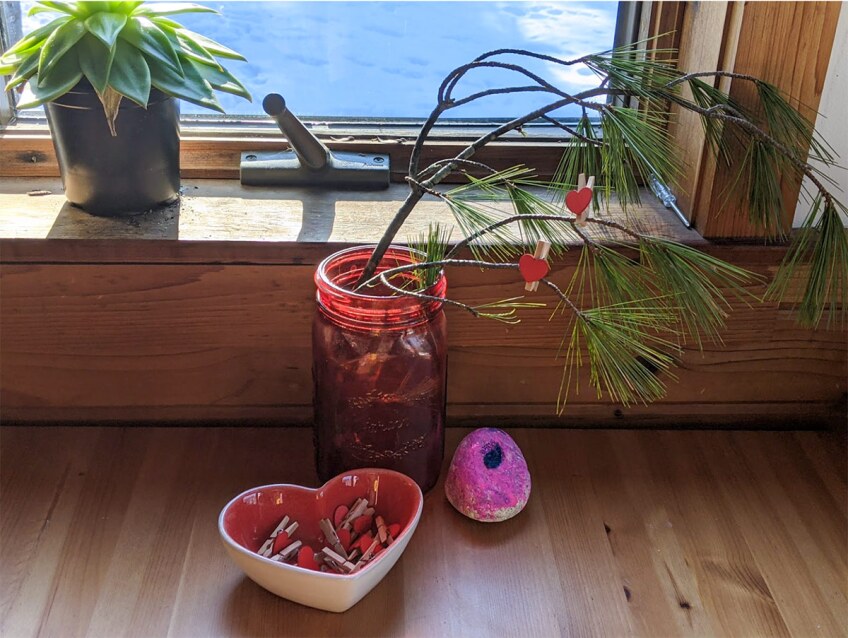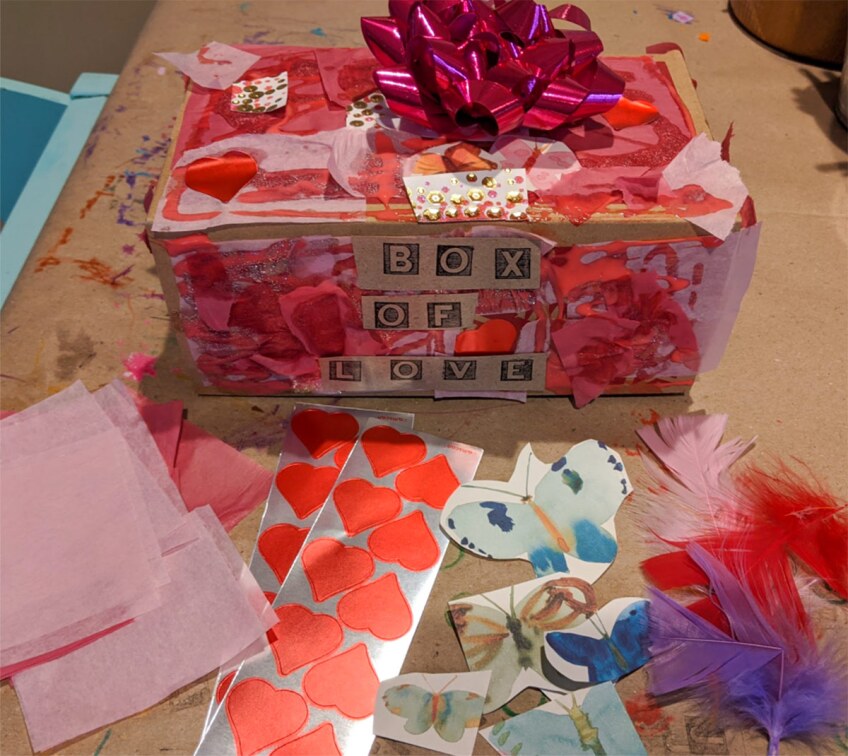3 Easy Activities to Help Kids Feel the Love for Math on Valentine's Day
Valentine’s Day is right around the corner, but if you’re anything like our family, this holiday can feel way too much like a “Hallmark holiday.” However, there is a silver lining. Instead of talking about what it looks, sounds and feels like to show love to each other just one day a year, let’s remember that we can foster kindness and connection every single day.
This Valentine’s Day, foster heart-centered connections as you partake in these hands-on activities that increase mathematics development — and a little bit of literacy, too!
Here’s how to get started:
Create Daily Messages of Connection and Gratitude

Connect with nature by going for a walk as a family and gathering a fallen branch from outside. Next, find some wooden clothespins, markers, construction paper and glue. Support your child in folding the construction paper into 16 squares. A paper folding tutorial can help!
Once the paper is folded, draw a small heart on the visible square and cut it out (this can be a little tricky because there are many layers of paper). Tap into math skills by counting each heart one by one up to 16. This supports children in understanding one-to-one correspondence, which is the ability to match numbers to specific quantities. Next, glue the hearts to the clothespins and let them dry. Once the glue is dry, put all your decorated clothespins in a container near your branch. Then, choose a time once a day to sit down as a family and share something you feel grateful for, someone you love, or a favorite activity from the day. You can download helpful prompts to print out and place in your clothespins container. As you share, place a clothespin on the branch. Watch as your branch quickly fills up to remind you of all the small things in your life you have to be grateful for!
Download step-by-step directions.
Design a Box of Love

Invite your child to find a shoe box and a variety of craft materials. Explain to your child that they are going to create a Box of Love where family members will place a love note every day in February—or once a week, whatever works for you!. To make the love notes, take five or more sheets of construction paper and support your child in folding each piece into four parts. Relate this to fractions and parts of a whole. For example, say, “We started with one large piece of paper. How many sections did we split it into? Yes, four! These smaller pieces of paper are going to be the love notes. If I write on one, that means I used one quarter of the sheet of paper. If I write on two, that means I used one half of the paper.” This kind of math talk can continue as you decorate the box together. Then, each evening after your child has gone to bed, write a love note to them. Notes can include drawings, poems, songs, jokes, etc. Not only will this foster connection between you and the child, but it’s also a wonderful way to support literacy development. You can also encourage kids to make notes and boxes for other members of the family. These kinds of reading and writing attempts are all wonderful ways to increase awareness and motivation around literacy development.
Download step-by-step directions.
Send Messages of Love
Watch "Sesame Street: Elmo Loves You." As you watch, jot down words, phrases and pictures that illustrate what love looks, sounds and feels like to your family. Ask children prompting questions like, “How do people show you they love you?” and “How does it feel to show your love to someone else?”
Get a variety of cardboard cutouts of shapes such as a rectangle, square, star, heart, oval and diamond, then invite your child to choose one. Support your child in tracing the cardboard cutout onto some construction paper and cutting it out. Encourage your child to pay attention to what they notice about the shapes. For example, say, “How many shapes do we have here? Are there any shapes that are missing?” or “How many sides does this shape have? Points? Are the lines straight or curvy? What else do you notice?” Invite your child to write down words, draw pictures or cut and paste pictures from magazines to send messages of love to their family and friends. Ask them to think about what they want to say and how they think the love note will make their loved one feel. You can help record your child’s thoughts on the card as appropriate.
When you’re done, you can mail your messages out to loved ones or share them digitally.
Download step-by-step directions.



